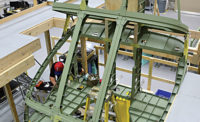CAD Platform Quickens Development of Blood-Collection Device




Product designers at Switzerland-based Loop Medical know that many people fear being pricked with a needle. That’s why they’re hard at work testing a prototype needle-free, blood-collection device that allows for diagnostic tests at a hospital, lab, doctor’s office, workplace or home.
The product extracts blood from capillaries just below the skin, unlike conventional devices that collect blood from the vein. Funded by the Bill and Melinda Gates Foundation, the technology is designed to simplify blood diagnostic testing at health care facilities worldwide.
Arthur Queval, founder and CEO of Loop Medical, notes that the device makes a superficial incision, thereby eliminating the risk of needle-stick injuries. It can be used by the patient or by someone with very little training, and even lets him or her provide a collected blood sample that meets the processes of a standard lab, such as Quest Diagnostics or LabCorp.
Because Loop Medical expects the device to go into clinical trials in 2020, it is prevented from revealing many design and technology details. However, Queval does acknowledge that he and a colleague have personally tested the prototype on themselves and that it truly is painless.
“[After] my colleague and I placed it on our arms and activated it, we thought, ‘Oh, it didn’t work for some reason,’” says Queval. “But, we removed the device after a couple of minutes, and saw there was a blood sample inside. We actually were not aware that it had already started [collecting blood].”
When Queval launched Loop Medical in 2016, he needed to find a CAD platform that he could run on his Mac computer without any additional hardware. His research eventually led him to Onshape, a Cloud-based product development platform that is delivered over the Internet and combines CAD, data management, collaboration tools and real-time analytics. Initially, Queval was drawn to the platform because of its easy design capability and that it requires no additional hardware, downloads, licenses or other time-consuming IT tasks.
Within a short time, however, he found the software’s main benefit to be that it quickens the collaboration process between Loop Medical teams in Switzerland, Germany and France. Onshape’s Sharing feature lets users securely and instantly collaborate with a colleague, vendor, customer or partner by granting them editing, commenting or view-only access rights to a CAD model. In addition, a user can immediately block outside access to his designs when a project is over, reducing the risk of unintentionally leaking intellectual property.
“Sharing design files used to be frustrating because partners would always be working on a different version of the CAD system,” says Queval. “We couldn’t open up each other’s work without having long email conversations or using Google Drive. Communication was quite inefficient.”
With Onshape, workflow is smooth and Queval can always see the status of a design, and comment or address problems in real time. He also likes that Onshape reliably delivers its new updates in the cloud every three weeks with zero downtime.
These updates include new CAD features, management functionality, collaboration tool enhancements, user interface and performance improvements, bug fixes, and changes to Onshape Drawings and its FeatureScript open-source programming language. Equally important, Onshape
automatically tests every CAD model against its latest software version, so there are no disrupted designs.
“Before Onshape, IT issues would take up 30 percent of our engineering team’s time or we’d need to dedicate one IT person for the R&D team,” says Queval. “We don’t need to do that now, so we’re saving on overhead, while also being much more efficient.”
For more information on CAD software, call 844-667-4273 or visit www.onshape.com.
Looking for a reprint of this article?
From high-res PDFs to custom plaques, order your copy today!








